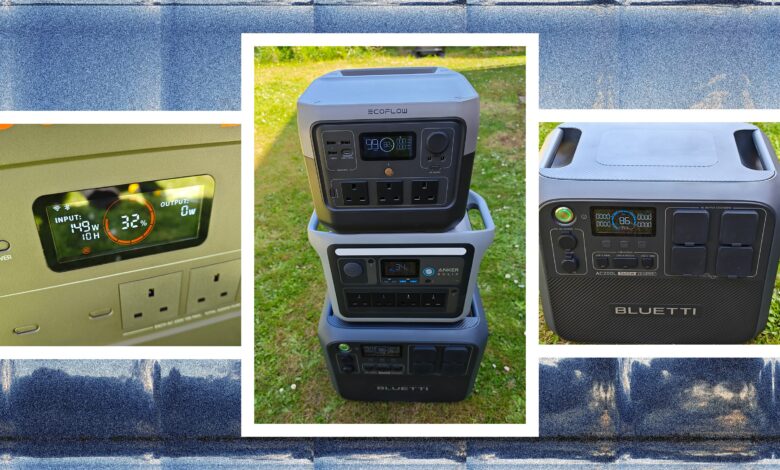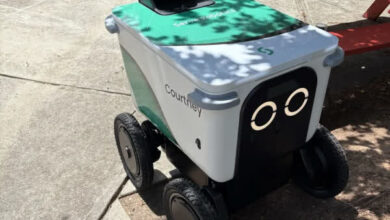8 Best Portable Power Stations (2024): Power Capacity, Portability, Camping, and More

Dabbsson DBS1000 Pro Portable Power Station for $999: This 1024-watt-hour capacity power station has a LiFePO4 battery and a decent mix of ports to charge and power your gadgetry. The US model has four AC outlets, three USB-A ports, three USB-C ports, a car socket, and two DC5521 barrel ports. It can charge to 80 percent in under an hour if you plug in but expect some fan noise. You can also charge from solar panels or through the carport. You can connect via Wi-Fi and control it from the app, but the display gives you the info you need without it and has a customizable light underneath. The 2,000-watt output is impressive, and there are boost and surge modes to briefly take it to 3,000 and 4,000 watts, respectively. It performed well in my tests and can act as an EPS with a 15-millisecond delay. It’s a solid alternative to our picks above but doesn’t stand out. The fan comes on frequently and can be annoying. I also had an issue with one of the USB ports sometimes refusing to charge a phone. Buy with the DBS2000B battery expansion ($2,300) to boost to 3,072 watt hours. It comes with a five-year warranty with registration.
Bluetti AC180 for $999: I also tested this smaller power station from Bluetti, and it’s a solid option if you don’t need quite as much juice as the pick above. The AC180 also has a LiFePO4 battery inside but with a 1,152-watt-hour capacity. It maxes out at 1,800 watts but can surge up to 2,700 watts for short bursts. The US model has four AC outlets, one USB-C (100 W), and four USB-A ports (15 W apiece). There’s even a wireless charging spot on top that goes up to 15 watts. You can fully charge the AC180 from an outlet in an hour, and it comes with solar and car charging cables as alternatives. It can also act as a UPS with a 20-millisecond switching time. This power station is good for small gadgets and appliances like a TV or mini fridge. Fan noise hit around 45 decibels under a heavy load, which isn’t too bad. What I don’t like is the weight (35 pounds seems relatively heavy for this capacity), and I’d prefer more USB-C ports. Interestingly, Bluetti has partnered with Fragile to offer this power station as a subscription ($40 per month) for no money up front, which includes free replacements if anything goes wrong, though it doesn’t cover theft or user damage.
Ugreen PowerRoam 1200W Portable Power Station for $799: This 1,024-watt-hour capacity power station packs a LiFePO4 battery inside and boasts plenty of ports (6 x AC, 2 x USB-C, 2 x USB-A, 1 x Car, 2 x DC5521). It can put out up to 1,200 watts and weighs a hefty 25 pounds, but there’s a big handle on top for lugging it around. You will also find a standard AC input and an XT60 for connecting solar panels. You can control everything using the buttons and display on the front, and there’s a light that can strobe for emergencies. The app connects via Wi-Fi or Bluetooth for a few extra options. Unfortunately, the app is flaky, and I had to create my account and add the power station more than once because it refused to accept my login info. Ugreen sent me the version with the 200-watt Solar Panel, which did a fine job charging the station but rarely produced more than 130 watts. The PowerRoam 1200W mostly performed well, but it ran out of juice prematurely in one test, making it tough to recommend unreservedly. It comes with a five-year warranty.
Zendure SuperBase Pro 2000 for $1,700: With a whopping 2,096-watt-hour capacity, tons of outlets (6 x AC, 1 x Car, 3 x DC5521, 4 x USB-C), and a maximum output of 2,000 watts (surge 3,000 watts), this is a great portable power station. It is 47 pounds but has two wheels, a carry handle, and a separate telescopic handle. Zendure’s app is slick, this power station can serve as an uninterruptible power supply, and it performed well in my tests, but the fans were almost constantly on. I also have concerns about its longevity. The SuperBase Pro 2000 has a Li-NMC battery inside, probably because it offers greater energy density than LiFePO4 (the similarly sized SuperBase Pro 1500 has a LiFePO4 battery and just 1440 Wh capacity), but Li-NMC batteries don’t last as long. The warranty is two years, but you can extend it by a year by registering with Zendure.
Jackery Explorer 1000 for $999: If you need a power station, the Jackery Explorer 1000 is a solid place to start. It strikes a good balance between ease of use, power, and capacity. It may not be enough to run your air conditioner (it has a max output of 1,000 watts), but it should be able to handle just about anything else. I’ve used it to power everything from a table saw to a small refrigerator, as well as to charge up all my usual gadgets. It’s well-made, easy enough to carry (22 pounds), and roughly the size of a small cooler. In my capacity test, it managed slightly better than its advertised 1,002 watt-hours. Charging it up does take a while, particularly if you’re using solar panels (sold separately), which took about a day and a half. I strongly suggest at least 200 watts’ worth of panels.


